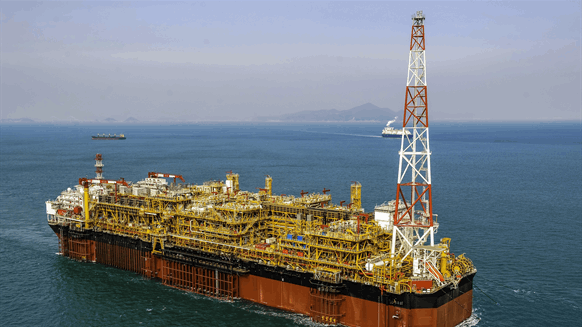Australia’s Woodside Energy Group Ltd is moving the first oil production target from its Sangomar field in Senegal to mid-2024 from its initial estimated date of early 2023, the company said in a press release on Tuesday.
Woodside also revised the total cost of the project to a range of $4.9 billion to $5.2 billion, an increase of seven to 13 percent from the previous cost estimate of $4.6 billion. The company revised the first oil production target and project cost after identifying unexpected remedial work required at the floating production storage and offloading (FPSO) facility of the project’s Phase 1 development of Sangomar field.
“We have taken the prudent decision to carry out the repair work while the FPSO remains at the Singapore shipyard,” Woodside CEO Meg O’Neill said, adding that the project team’s priority it was the safe end of all activities.
“This minimizes the impact on the project schedule, as it is safer, more efficient and more cost-effective than carrying out the work offshore Senegal. This approach ensures that we can achieve the start of production in accordance with the tight schedule and increased operations as planned,” O’Neill said.
O’Neill further added that the project changes would have no impact on Woodside’s 2023 production guidance.
According to the press release, as of June 30, the overall project was 88 percent complete. The subsea installation campaign is 76 percent complete, with the scope of subsea work at 95 percent. Woodside said 12 of the 23 target wells have been drilled and completed, and the well results to date have confirmed the quality of the resource.
In January 2020, Woodside Energy, which is the operator of the Rufisque Offshore, Sangomar Offshore and Sangomar Deep Offshore (RSSD) joint venture behind the Sangomar project, received approval to develop the asset. In addition to Woodside’s unit Woodside Energy (Senegal) BV, other RSSD partners include Cairn Energy PLC’s subsidiary Capricorn Senegal Limited and Senegal’s national oil company Petrosen.
The Sangomar project, which is Senegal’s first offshore oil project, includes a stand-alone FPSO facility with 23 subsea wells and supporting subsea infrastructure. The FPSO will process oil prior to export and has an expected production capacity of 100,000 barrels per day. Phase 1 of the development targets approximately 231 million barrels of oil resources. Woodside awarded the contract for the supply of the FPSO to MODEC and the construction and installation of the integrated subsea production systems and subsea umbilicals, risers and flowlines to Subsea Integration Alliance. The company awarded two well-grounded contracts to Diamond Offshore for the Ocean BlackRhino and Ocean BlackHawk drilling rigs. Woodside completed construction of the FPSO in November 2022.
In June, Woodside gave the go-ahead to develop the Trion oil field in Mexico, planning to spend $7.2 billion for 24 wells, with first oil production expected in 2028. The company will develop Trion through a floating production unit (FPU) with an oil production capacity of 100,000 barrels per day. The FPU will be connected to a floating storage and offloading vessel with a capacity of 950,000 barrels of oil. Trion has estimated resources at 479 million barrels of oil equivalent.
To contact the author, send an email to rteodoro.editor@outlook.com


